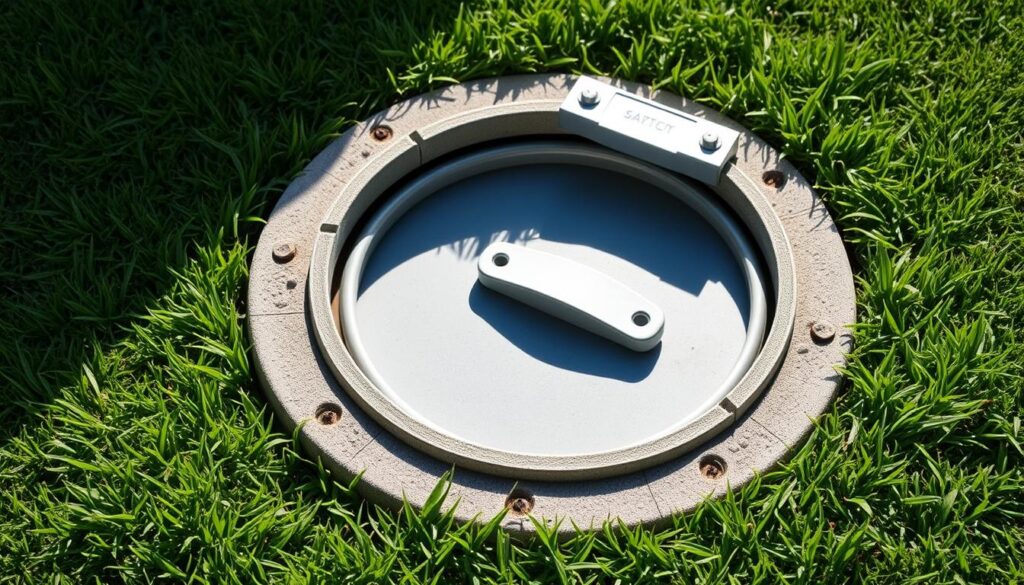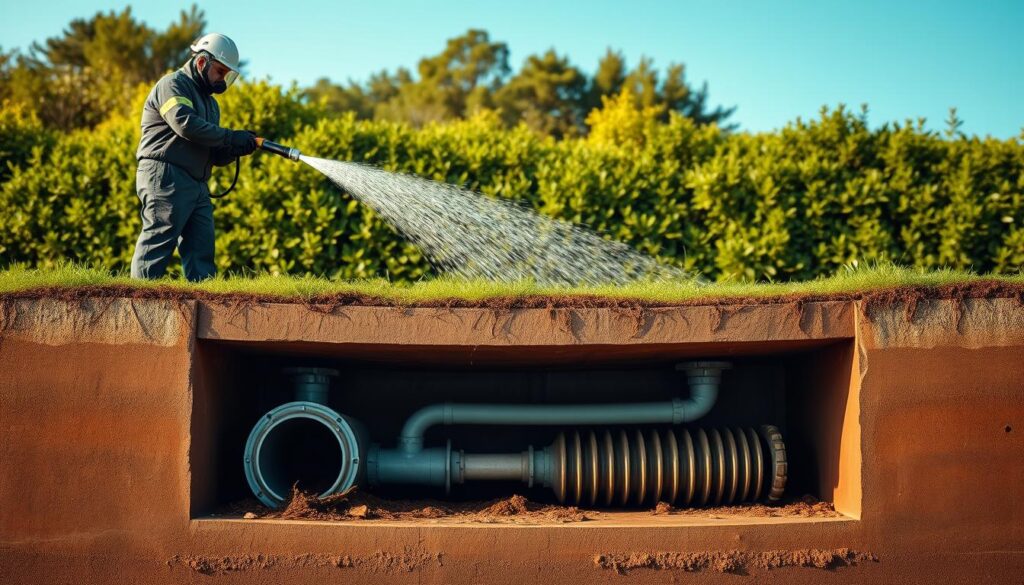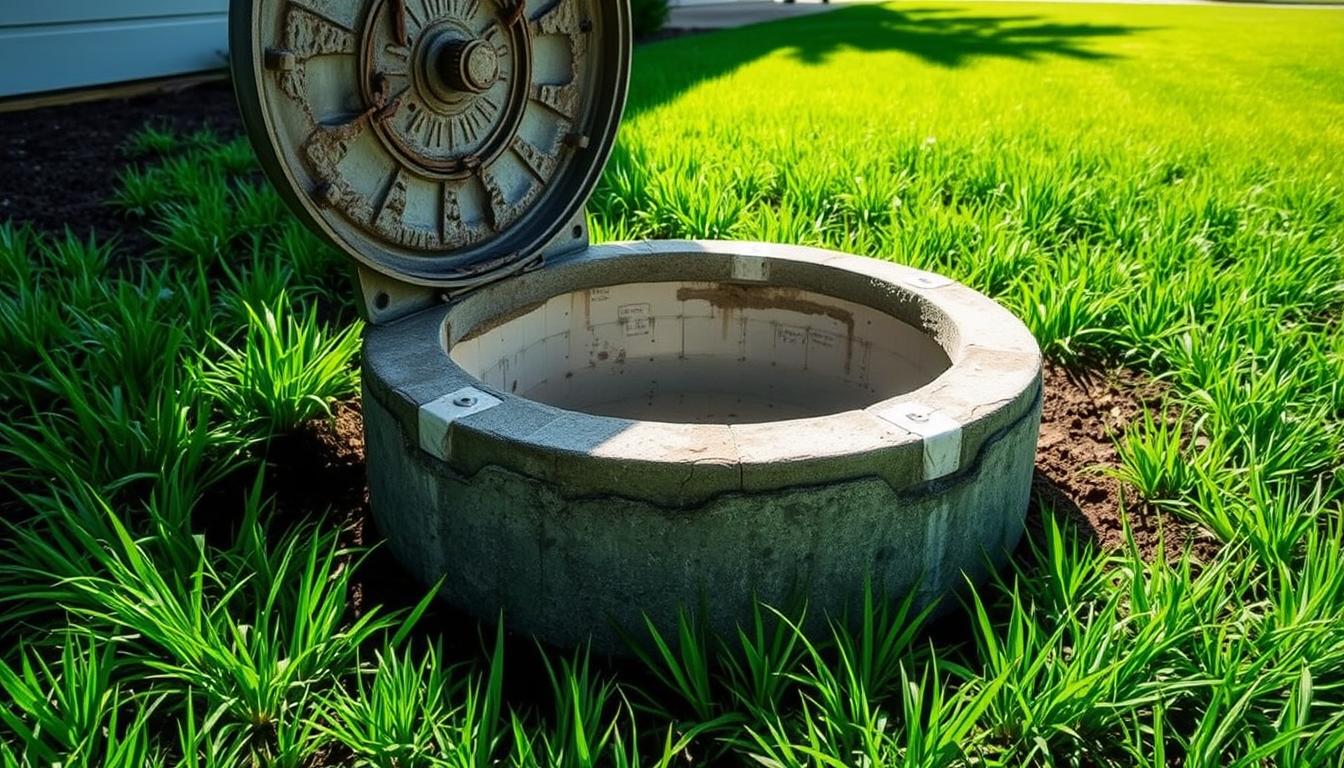Maintaining a septic system is crucial for homeowners, and one of the key aspects of this maintenance is regular septic tank cleaning. The cost associated with this service can vary significantly based on several factors.
The average cost for septic tank cleaning ranges between $288 to $556, with a national average of around $400. Factors such as the size of the tank, usage patterns, and geographical location play a significant role in determining the final cost.
Understanding these cost factors is essential for homeowners and professionals to budget and plan for septic system maintenance effectively.
Key Takeaways
- The average cost of septic tank cleaning is around $400.
- Costs can range from $288 to $556.
- Tank size, usage, and location influence the cost.
- Regular maintenance is crucial for septic system longevity.
- Understanding cost factors helps in budgeting.
Understanding Your Septic System
Understanding the intricacies of your septic system is essential for its longevity and proper functioning. A typical septic system consists of a septic tank and a drain field, working together to treat and dispose of wastewater.
How Septic Systems Work
A septic system operates by collecting wastewater from a household in a septic tank, where solids and liquids are separated. The liquid then flows into the drain field, where it is filtered and treated by the soil.
The process involves several key steps:
- Wastewater collection in the septic tank
- Separation of solids and liquids
- Liquid effluent dispersal into the drain field
- Soil filtration and treatment
Why Regular Cleaning is Essential
Regular septic tank cleaning is crucial to prevent system failures and backups. Cleaning every three to five years is recommended to remove accumulated solids and prevent them from entering the drain field.
Failing to clean the septic tank regularly can lead to:
- System backups and overflows
- Contamination of groundwater
- Expensive repairs or replacement
Components That Require Maintenance
Key components of a septic system that require regular maintenance include:
- The septic tank itself
- The inlet and outlet baffles
- The drain field
- The distribution pipes
Regular inspection and maintenance of these components can significantly extend the life of a septic system and prevent costly issues. Homeowners should be aware of the professional septic tank cleaning cost and factor it into their maintenance budget.
By understanding how septic systems work and the importance of regular cleaning, homeowners can better manage their systems and avoid potential problems.
Average Septic Tank Cleaning Price Nationwide
The national average cost for septic tank cleaning varies significantly based on several factors, including tank size, location, and system complexity.
Typical Cost Ranges for Residential Properties
For residential properties, the average cost to pump a septic tank is $424, with most homeowners paying between $290 and $560. The cost can be influenced by the size of the tank, with larger tanks requiring more resources to clean.
| Tank Size (Gallons) | Average Cost | Cost Range |
|---|---|---|
| 750 | $200 | $150-$300 |
| 1000 | $300 | $250-$400 |
| 1500 | $450 | $350-$600 |
Commercial Septic System Cleaning Costs
Commercial septic systems are generally larger and more complex than residential systems, resulting in higher cleaning costs. The average cost for commercial septic tank cleaning can range from $500 to over $1,500, depending on the system’s size and complexity.
Regional Price Variations Across the United States
Regional variations in septic tank cleaning costs are significant due to differences in labor rates, regulations, and environmental factors. For instance, costs tend to be higher in areas with stricter environmental regulations or higher labor costs.
Key Factors That Influence Septic Tank Cleaning Costs
Understanding the factors that impact septic tank cleaning costs is crucial for homeowners to budget effectively. Several elements contribute to the overall expense, making it essential to consider these variables when planning for septic system maintenance.
Tank Size and Capacity
The size and capacity of a septic tank significantly influence cleaning costs. Larger tanks require more time and resources to clean, increasing the overall cost. Typically, tanks range from 750 to 1,500 gallons, with larger tanks costing more to service. For instance, a 1,000-gallon tank may cost between $150 to $300 to clean, while a 1,500-gallon tank could cost $250 to $500 or more.
Tank Accessibility
Tank accessibility is another critical factor affecting cleaning costs. Tanks located in hard-to-reach areas, such as under decks or in tight spaces, may require additional equipment or labor, increasing the cost. Easy access, on the other hand, can simplify the cleaning process, potentially reducing expenses.
System Age and Condition
The age and condition of the septic system also play a significant role in determining cleaning costs. Older systems or those in poor condition may require more frequent cleaning or additional maintenance, such as repairs or replacements of damaged components. Regular inspections can help identify potential issues before they become major problems.
Geographic Location
Geographic location is a factor that can influence septic tank cleaning costs due to regional variations in labor rates, regulations, and environmental conditions. For example, areas with high water tables or environmentally sensitive zones may have stricter regulations, potentially increasing costs.
In conclusion, understanding these key factors can help homeowners better estimate the costs associated with septic tank cleaning. By considering tank size, accessibility, system age, and geographic location, individuals can make more informed decisions about their septic system maintenance.
Additional Services and Their Costs
Maintaining a septic system involves various services beyond routine cleaning, each with its associated costs. Homeowners should be aware of these additional expenses to budget effectively for their septic system maintenance.
Septic Tank Inspection Costs
A septic tank inspection is a crucial service that assesses the condition of the tank, distribution box, and leach field. The cost of a septic tank inspection typically ranges from $150 to $450. This service is essential for identifying potential issues before they become major problems.

Filter Cleaning and Replacement
Filters in a septic system need regular cleaning and eventual replacement. The cost for filter cleaning can vary, but on average, it ranges from $50 to $200. Replacement filters can cost between $100 to $500, depending on the type and quality of the filter.
Baffle Repair Pricing
The baffle is a critical component of a septic tank, directing wastewater flow. Repairing or replacing a baffle can cost between $200 to $1,000, depending on the extent of the damage and the complexity of the repair.
Chemical Treatment Options
Chemical treatments are sometimes used to enhance the performance of a septic system. These treatments can cost between $50 to $200 per application, depending on the product and the frequency of treatment. It’s essential to use these treatments judiciously and under professional guidance.
Understanding the costs associated with these additional services is vital for effective septic system maintenance. Homeowners should factor these expenses into their budget to ensure their septic system operates efficiently and effectively.
Signs Your Septic Tank Needs Cleaning
Recognizing the signs that indicate a septic tank needs cleaning is vital for maintaining a healthy and functional septic system. Homeowners who rely on septic systems should be aware of the warning signs that signal the need for maintenance.
Slow Drains and Backups
One of the most common indicators that a septic tank requires cleaning is the presence of slow drains and backups. When drains in your home are slow to empty or when sewage backs up into your sinks, toilets, or showers, it may be a sign that your septic tank is full and needs to be pumped.
Unpleasant Odors Around Your Property
Unpleasant odors emanating from your yard or drains can be a strong indication that your septic system is not functioning properly. These odors can be a sign that waste is not being processed correctly, potentially due to a full or clogged septic tank.
Unusually Lush Grass Over the Drain Field
An unusually lush and green area over your drain field can indicate that your septic tank is leaking or that the drain field is being over-saturated with wastewater. This can be a sign that the septic system is not functioning as it should.
Water Pooling in Your Yard
Water pooling or standing water in your yard, particularly over or near the drain field, can be a sign that the septic system is failing or that the tank is full and needs cleaning. This standing water can be a health hazard and should be addressed promptly.
Being aware of these signs can help homeowners take timely action to maintain their septic systems, potentially avoiding costly repairs and ensuring the longevity of their septic tanks.
The Septic Tank Cleaning Process Explained
A thorough septic tank cleaning involves several key procedures that professionals follow to ensure a job well done. Understanding these steps can help homeowners appreciate the complexity of the task and the importance of hiring a professional service.
Initial Assessment and Location
The first step in the septic tank cleaning process is an initial assessment and location of the septic tank. Professionals use specialized equipment to locate the tank and inspect its condition. This assessment helps identify any potential issues that may affect the cleaning process.
Pumping and Cleaning Procedures
Once the tank is located, the next step is pumping out the waste. Professionals use a vacuum truck to pump out the contents of the tank. The cost of this service can vary depending on factors such as the septic tank pumping cost and the septic tank pumping service cost. After pumping, the tank is inspected for any remaining waste or debris.

Inspection During Cleaning
During the cleaning process, professionals inspect the tank and its components for any signs of damage or wear. This inspection is crucial in identifying potential issues before they become major problems. The inspection may also involve checking the professional septic tank cleaning cost to ensure it aligns with the initial estimate.
Disposal of Waste Materials
Finally, the waste materials pumped out of the septic tank are disposed of in accordance with environmental regulations. Professionals ensure that the waste is handled and disposed of safely, minimizing any environmental impact.
By understanding the septic tank cleaning process, homeowners can better appreciate the importance of regular maintenance and the value of hiring a professional service to perform the task.
Recommended Cleaning Frequency and Maintenance Schedule
The Environmental Protection Agency (EPA) suggests that septic tanks be cleaned every three to five years, contingent upon household size and usage patterns. Regular maintenance is crucial for the longevity and efficiency of septic systems.
Household Size Considerations
The size of the household significantly impacts the frequency of septic tank cleaning. Larger households generate more wastewater, necessitating more frequent cleaning. For instance, a household of four may require cleaning every three years, while a smaller household of two might only need cleaning every five years.
| Household Size | Recommended Cleaning Frequency |
|---|---|
| 1-2 people | Every 5 years |
| 3-4 people | Every 3-4 years |
| 5 or more people | Every 2-3 years |
Usage Patterns Impact
Usage patterns, including water consumption and the presence of garbage disposals, also affect how often a septic tank needs to be cleaned. Households with higher water usage or garbage disposals may require more frequent septic tank maintenance.
“Regular pumping and inspection are key to extending the life of your septic system. Neglecting maintenance can lead to costly repairs and potential health hazards.” – EPA Guidelines
Creating a Maintenance Calendar
To ensure timely maintenance, creating a calendar that outlines when septic tank cleaning is due is advisable. This calendar should also include regular inspections to identify potential issues early.
- Schedule annual inspections
- Keep records of maintenance and cleaning
- Adjust the cleaning frequency based on household changes or usage patterns
Professional Recommendations by Region
Regional factors, including soil type and local regulations, can influence septic system maintenance. Consulting with local professionals can provide insights into the best practices for your area.
By understanding and implementing these guidelines, homeowners can ensure their septic systems operate efficiently, reducing the risk of costly repairs and environmental hazards.
DIY vs. Professional Septic Tank Cleaning
Professional septic tank cleaning is recommended, but some homeowners consider DIY approaches. While DIY septic tank cleaning might seem cost-effective, it poses significant risks and challenges.
Limitations of DIY Approaches
DIY septic tank cleaning lacks the expertise and equipment necessary for thorough and safe maintenance. Homeowners may not be aware of the proper procedures, potentially leading to incomplete cleaning, damage to the system, or environmental hazards.
When to Call the Professionals
Hiring professionals ensures that the septic tank is cleaned correctly and safely. Professionals have the necessary equipment and experience to handle the job, including proper disposal of waste materials.
Selecting a Reputable Service Provider
When selecting a septic tank cleaning service, consider factors such as experience, equipment, and customer reviews. A reputable provider will offer a comprehensive service, including inspection and maintenance advice.
Questions to Ask Before Hiring
Before hiring a septic tank cleaning service, ask about their experience, pricing, and the services included. Ensure they are licensed and insured.
| Service | Average Cost | Frequency |
|---|---|---|
| Septic Tank Pumping | $200-$500 | Every 3-5 years |
| Inspection | $100-$300 | Annually |
| Full Maintenance | $300-$700 | Every 3-5 years |
By understanding the costs and benefits of professional septic tank cleaning, homeowners can make informed decisions about their system’s maintenance, ensuring it operates efficiently and safely.
Conclusion: Budgeting for Septic System Maintenance
Effective septic system maintenance is crucial for homeowners to prevent costly repairs and ensure the longevity of their septic systems. Regular cleaning and inspections are key components of this maintenance, with the cost of septic tank cleaning being a significant factor in overall expenses.
The average septic tank maintenance cost can vary widely based on factors such as tank size, accessibility, and geographic location. Understanding these factors and budgeting accordingly can help homeowners avoid unexpected expenses. The septic system cleaning cost is an essential aspect of maintenance, with regular pumping and inspections helping to identify potential issues before they become major problems.
By prioritizing septic system maintenance and budgeting for the associated costs, homeowners can protect their investment and ensure the continued functionality of their septic systems. This proactive approach can lead to significant long-term savings and reduced stress for homeowners.

